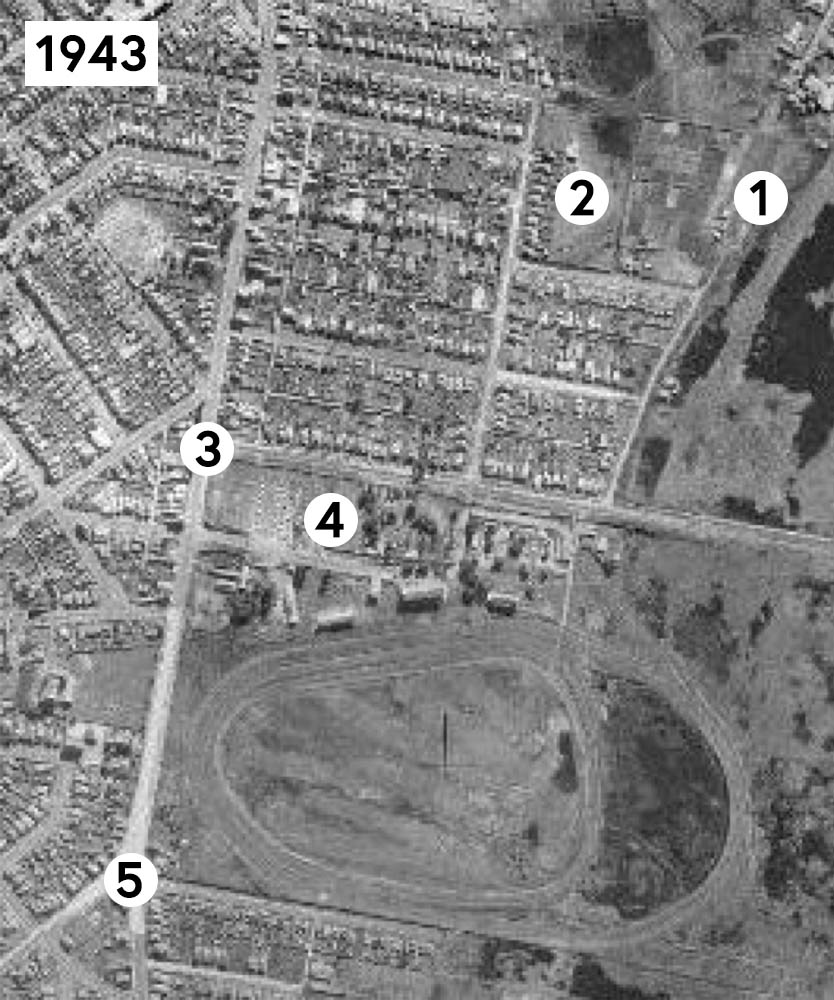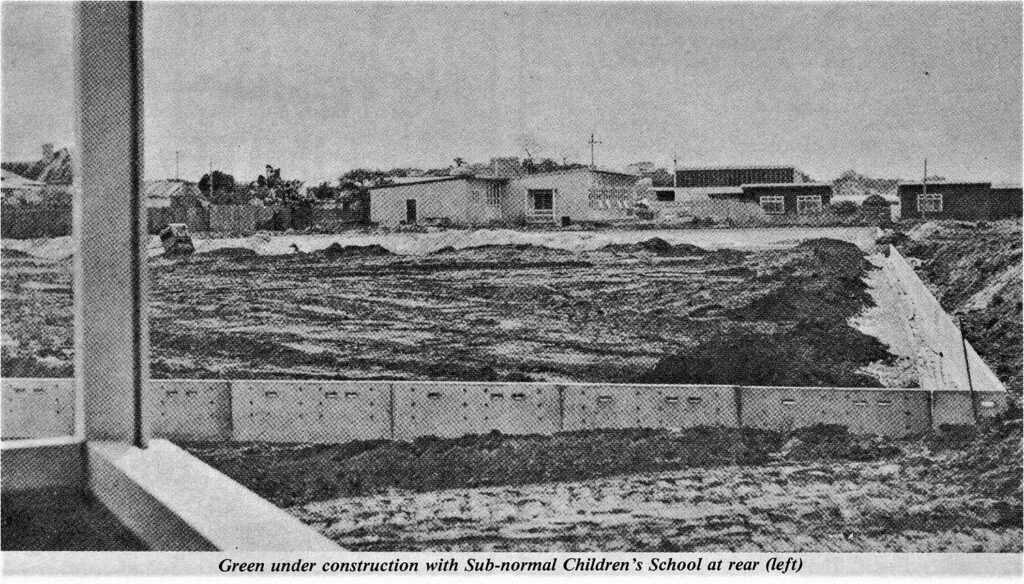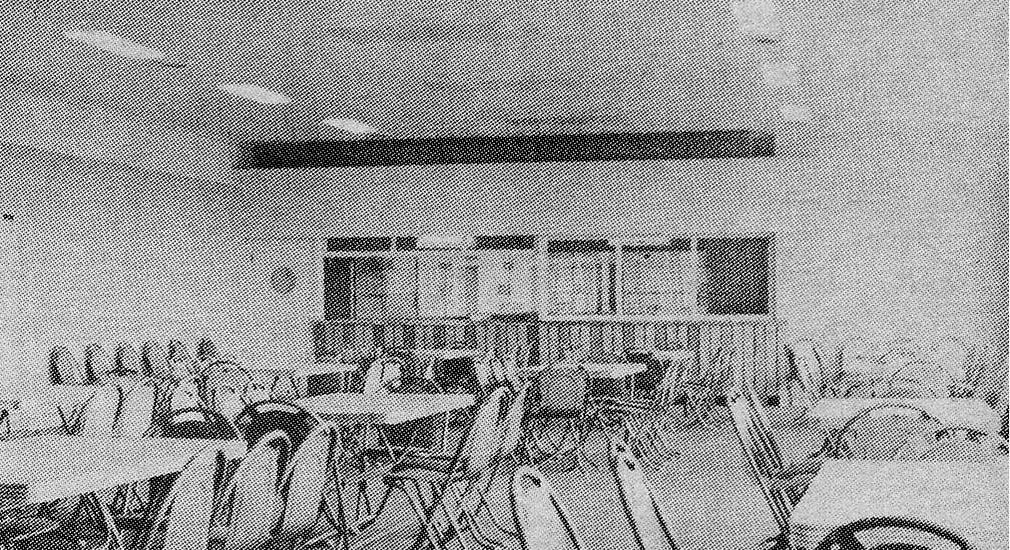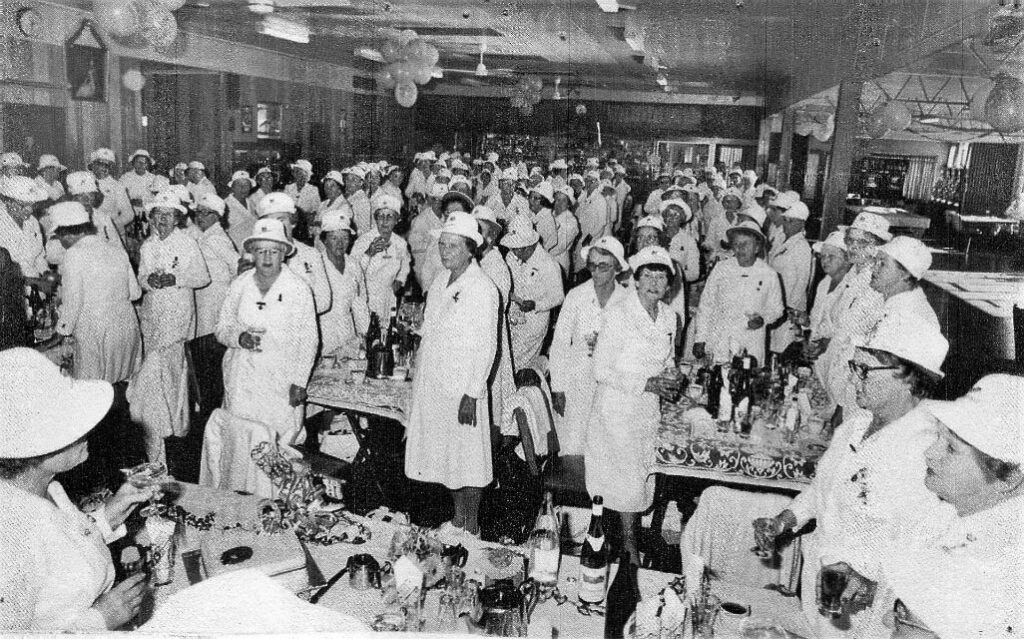History
Early Days
Patrick Moore was an Irish blacksmith who came to Sydney in 1797 as a convict. In 1812 Governor Macquarie granted him 62 acres of the land now occupied by James Cook HS, Moorefield estate, and St George TAFE.
He called the holding “Moorefield”.
In 1843 Patrick gifted an adjacent block (originally granted to Mr George Trace) to his nephew from Ireland, also named Patrick Moore. Moorefield Bowling Club stands on this block. It was (nephew) Patrick Moore’s son, Peter Moore, who established the Moorefield Racecourse in 1888. Peter Moore was one of Kogarah’s most prominent citizens; a philanthropist, and patron and active member of countless organisations and sporting clubs until his death in 1925.
Moorefield Racecourse
The first race meeting at Moorefield was held in 1888. The last meeting was in 1951, although track work and barrier trials continued until 1955.
So, what is its relevance to Moorefield Bowling Club?
When the building of a bowling club was first formally discussed in 1957 the racecourse had only just been closed. French St was still lined with stables from one end to the other, and the clatter of hooves was still a familiar sound. Racing was the lifeblood of the area. So the club was named after the Moorefield Racecourse. Evidence of this still appears as a horse’s head on the club’s logo.
Below is an aerial photo taken in 1943 showing the vacant Moorefield Bowling Club site and the nearby racecourse.

Chinese market gardens east of the club spread across what is now West Botany Street.
The future site of Moorefield Bowlo. Note the diagonal irrigation ditch which explains the odd alignment of the clubhouse.
Cnr Princes Hwy & President Ave
The Moore mansion stood on the site of what is now the TAFE carpark
Cnr Princes Hwy & Rocky Point Rd
Ted Lacey
In 1951 Mr Ted Lacy was looking for suitable care for his son who had a disability. He and several other parents established the St George District Sub-Normal Children’s Society which led in 1956 to the construction of South Haven Special School near the corner of Beach and Cross Sts; not to be confused with the Bayside Garden Centre which is a joint venture between Bayside Council and the Disability Foundation of St George.
Ted Lacy clearly spent time doing voluntary work at the school and one day had a lightbulb moment. Why don’t we use all that wasted swampy land beside the school and build a bowling club? They wasted no time. On April 12 1957 14 citizens donated money to form the Moorefield Bowling Club.

The club committed to donating the bulk of its annual profits to the school, hence its motto “to extend a helping hand”. These two major inputs to its early formation are reflected in the club logo with the horse’s head, and the adult holding the child’s hand.
By the end of 1958 the club had over 200 bowling members. A spectacular “word of mouth” growth which could barely be matched in today’s age of social media.
The club continued to donate its profits to the school until 1984, when numbers were starting to shrink.
Construction of Clubhouse
Nearby Francis Drake Bowling Club made its greens available until the completion of the greens and clubhouse which took place in 1958 at a cost of about £11,000 ($360,000 in today’s money). The opening dinner at the new clubhouse was on 19/12/58, and the first day of bowls was on the following day. The first “official’ bowl was delivered by Tom Shakespeare, President of Royal NSWBA on the day of the formal opening 3rd May 1959. He claimed it was “nearly a toucher”. But then he would say that.

Above: President Ted Lacy (left) looks on as Tom Breakespeare (President RNSWBA) re-enacts the 1st bowl

Above: Seen here is the original clubhouse under construction in 1958, however, the building was plagued by drainage problems from the very beginning and was slowly sinking. In 1962 the decision was made to raise the building 276in (762mm), although drainage problems are still a problem after extended rainfall. An extension was also added in 1963.

Above: This is the original bar at the western end of the club. At a cost of around $130,000 In the year 2000 the bar was rebuilt in its current location and the club was carpeted throughout
The Women's Club
It was always intended a women’s club would be formed as soon as the men’s club was established. The 1st meeting of the women’s club was held on June 22nd 1959 with 91 members, which increased to 121 by the end of the year. Remember all members were bowling members. There was no such thing as social members. So between April 1957 to December 1959 the bowling members had gone from 14 to around 320!
The following (in quotes) is verbatim from club minutes at the time: A woman can join the club, but only if “her husband (if alive) is a financial member of the club” They allowed 5 lone women (max) to join, probably all war widows. The women were not allowed the amenities of the clubhouse on Sundays until after 4pm, but “they should be accommodated at tables at the top end of the room and that poker machines be placed convenient to them”.
As the women aged over the years numbers gradually depleted, and indeed plummeted in the 90’s. The Women’s Club finally closed in 2005. It was reborn in 2017 but regrettably finally closed in 2022 because of a lack of numbers.

Above: Bowlers toast the queen on Madam President’s Day in the 80’s.
From the 60's onwards
The 60’s through o the early 80’s was a boom time for the club and for bowls in general. In it’s prime the club had 4 greens filled to capacity every Saturday. Bowlers needed to get their names in early to get a run, and the women weren’t allowed to play on Saturdays.
Below is a snapshot of some random events over these years taken from board minutes:
April 1960: Construction of a 3rd Green
29/9/60: A trial period to stock a 2nd beer, Tooheys New, in addition to Reschs.
Sept 1962: Mains pressure not adequate to water greens. A storage tank was built which is still in use by the nursery.
1963: Building raised and extended
25/3/64: Complaint received that children were observed in club grounds in contravention of liquor laws.
Dec 1964: Construction of 4th green commenced.
1965: Construction of toilets bar and equipment room adjacent to 4th green. These buildings are still in use by the nursery.
Excerpt from minutes of 11/2/65: “Visitors or members attending in shorts or thongs other than the official uniform of the armed forces or boy scouts are not permitted to enter the clubhouse. Lady members or lady visitors amending in shorts, slacks or thongs are not permitted to enter the clubhouse.”
Club trading declined to a point in 1995 where Bruce Parsons, not a wealthy man, but a regular club patron, donated a personal cheque for $10,000 to enable the club to pay its bills.
With the construction of the new bar in 2000 the club’s fortunes began to turn around. Trading slowly picked up. The men’s club began to attract new members. At around this time clubs were closing in numbers across the St George district. To name just a few: Rockdale BC, Elizabethan BC, Arncliffe BC, St George BC, Mortdale BC, Penshurst BC, Oatley BC, Carrs Park BC, Bexley BC.
When St George Leagues Bowling club closed its green in 2007 it not only brought new bowlers into the club it funded the renovation and continued maintenance of our no. 1 green for a number of years.
Similarly when Francis Drake closed its greens in 2015 most of its bowlers came to Moorefield. Both of these clubs continue to run successful bowling days on Wednesdays and Thursdays.
An essential part of the club’s revival is that bowls continues to be the club’s raison d’etre. Apart from the bowlers who have come to us from clubs that have closed, there are a significant number of younger bowlers who have achieved successes in bowls not seen for many years. In addition to that these younger members are now participating in club management, such as our current President Nathan Bornstein, still on the right side of 40. The innovations these younger members brought have seen us through the Covid crisis with a record profit last financial year.
(Author’s note: If you have any items of historical interest to the club, particularly from the early years please contact the club or send me an email at bexleycorbins@bigpond.com)
Chairman: Nathan Bornstein
Vice Chairman: Senior – Robert Hagon, Junior – Andrew Willson
Treasurer: Mark Lukins
Directors: Alicia-Jade Morris, Mark Padina
Secretary: Gosia Chakarovski
Moorefield Bowling and Sports Club Co-Op Ltd must comply with the National Privacy Principals contained in the Privacy Act when dealing with personal information. The club has adopted this Privacy Policy as we recognize the right of our members, guests and staff to keep their personal information private. This Privacy Policy explains how we treat personal information we collect or hold.
The information we collect
- Information such as your name, address, email address, contact details and date of birth.
- Financial details such as your tax file number , Bank and Superannuation details if you are a staff member.
- Health information if you are a staff member.
- Any other information required by law for us to obtain.
Online Payments
Moorefield Bowlo does not store or process payment information locally. That information is securely transmitted to, and stored by the Payment Gateway (Stripe). Visit stripe.com for more information.
Payment Gateway Information Stored by Moorefield Bowlo
- Stripe Customer Numbers (cus_xxxxx…)
- Stripe Subscription Numbers (sub_xxxxx…)
- Transaction charge numbers (ch_xxxxx… or py_xxxxx….)
- User’s IP address is visible to Stripe
- Last 4 digits and expiration date of user’s Credit Card. This is used for Expiring Card Reminder Emails.
Payment Information sent to Stripe.com for processing and not stored by Moorefield Bowlo
- The buyer’s first and last name
- The buyer’s email address
- Full Credit Card Info – Number, CVC, Expiration Date
- The buyer’s IP address
How we use your information
Because we hold a Club Licence and have members, the Registered Clubs Act require us to collect your personal information to allow us to let you use our facilities and amenities. The club will not use your personal information for any other purpose without first seeking your consent, unless authorised or required by law. Generally, we will only use your personal information to:
- Process your application for membership of the Club
- Process your application for temporary membership of the Club
- Provide you with information about the Club’s products and services
- Provide you with newsletters, annual reports, and other information necessary to maintain your membership.
- Answer your enquiries and to register you for events, promotions, and competition.
- Providing it to Government Authorities to meet our responsibilities as Employers.
- As required by law, regulations or codes binding us to assist in investigations of security incidents, complaints, or illegal activities.
- For any other purpose for which you have given your consent.
Protecting your privacy while at the club
In the interests of security and safety, the Club operates video cameras within the Club premises and may collect personal information while investigating complaints or disciplinary proceedings.
Access to your information
You can access the personal information that the Club holds about you by contacting us. We will provide you with access unless there are certain legal reasons why we cannot. If you wish to change personal information that is out of date or inaccurate, please contact us. After receiving notice from you, we will take reasonable steps to correct any information which is inaccurate, incomplete or out of date.
Security
The security of your personal information is important to us and we take reasonable steps to protect it from misuse, loss, disclosure or unauthorised access. We do this by having:
- Security measures for access to our computers
- Confidentiality agreements with our employees
- Control of access to our buildings
- The internet is not a secure method of transmitting information. Accordingly, the Club cannot accept responsibility for the security of information you send to or receive from us over the internet or for any unauthorised access to or use of that information.
Changes to this privacy policy
The Club may change this policy from time to time, and we will let you know of any changes via our website: moorefieldbowo.com.au
If you have any queries relating to the Club’s Private Policy, please contact us on 95876299 or email: info@moorefieldbowlo.com.au or by mail, addressed to the Secretary c/- the Club’s address, and marked “Private and Confidential”
